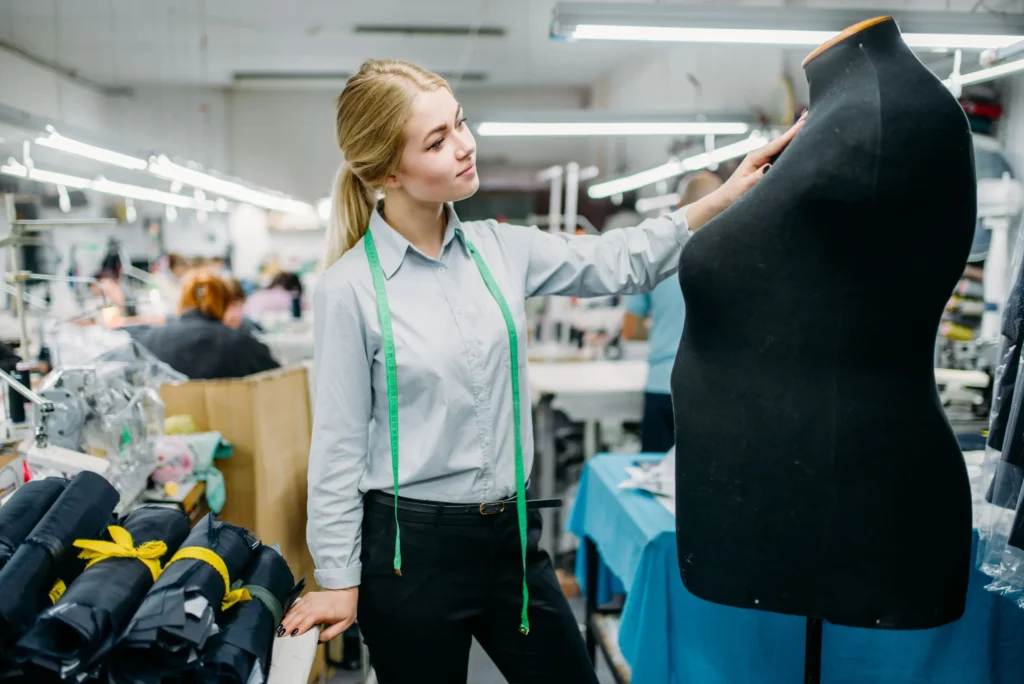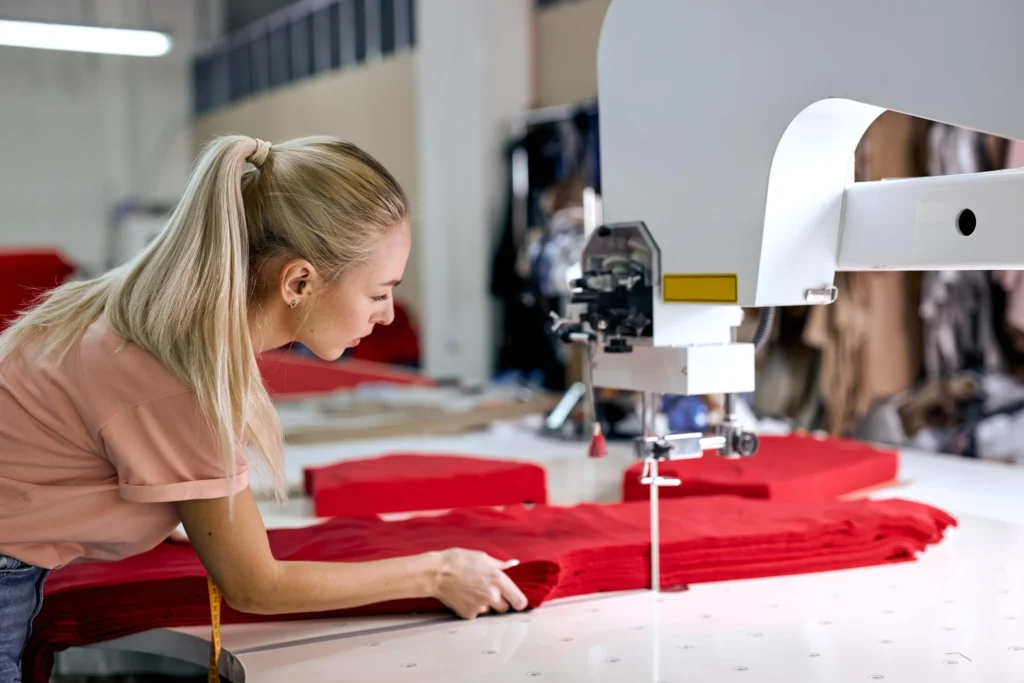What is the difference between custom manufacturing and mass production in fashion?
Custom clothing manufacturing creates products tailored to individual specifications, offering personalization, higher quality, and exclusivity. On the other hand, mass production produces large quantities of identical items, focusing on cost-efficiency and scalability.
What are the advantages of mass production in the fashion industry?
Mass production offers several benefits, including cost efficiency, the ability to meet high demand, consistent quality, and output speed. It allows fashion brands to reach a large audience with affordable products.
How does custom manufacturing benefit fashion brands?
Custom manufacturing allows brands to offer exclusive products, high-quality materials, and unique designs that meet specific customer needs. It also supports sustainability. Companies can improve their bottom line by reducing waste through efficient apparel manufacturing practices. On-demand production.
What is mass customization in fashion?
Personalized designs cater to the specific needs of the fashion market and can enhance customer loyalty. Cost-efficiency of mass production with some level of personalization. It allows customers to choose certain aspects of a product, like size, colour, or fabric. Fashion brands must carefully evaluate their target market while benefiting from economies of scale in their clothing line.
How do mass production and custom manufacturing impact the environment?
Mass production often leads to overproduction, contributing to waste and environmental damage. In contrast, custom manufacturing is more sustainable. It produces items only when an order is placed, reducing the overall carbon footprint and material waste.
Which production method is more cost-effective, custom manufacturing or mass production?
Mass production is generally more cost-effective because it benefits from economies of scale, allowing for a lower cost per unit. The success of a clothing line hinges on several key factors related to apparel manufacturing and market demand. Higher production costs due to its labor-intensive nature.
Can custom manufacturing be scalable?
Custom manufacturing can be challenging to scale, especially for brands with high demand, as it requires more time and resources to produce each item. However, mass customization offers a scalable solution, allowing personalized products at a larger scale while maintaining cost-efficiency.
How long does it take to produce custom garments compared to mass-produced ones?
Custom garments take longer to produce as each item is made-to-order, which involves additional design, fabric selection, and craftsmanship. Mass-produced clothes, however, are typically produced quickly in large quantities due to automated machinery and standardized processes.
Is mass production still relevant in the modern fashion industry?
Yes, this is a viable strategy for apparel business owners. Mass production is still highly relevant, especially in fast fashion, where the need to produce trendy, affordable clothing in large volumes is essential. However, there’s a growing demand for sustainable fashion, and brands are increasingly adopting mass customization to cater to changing consumer preferences.
What should fashion brands consider when choosing between custom manufacturing and mass production?
Fashion brands should consider their target market, production volume, and cost constraints, and Brand positioning is crucial for apparel brands to differentiate themselves. Custom manufacturing is ideal for clothing manufacturers looking to innovate. Luxury and niche markets, while mass production is better for brands focusing on affordability and scalability.


